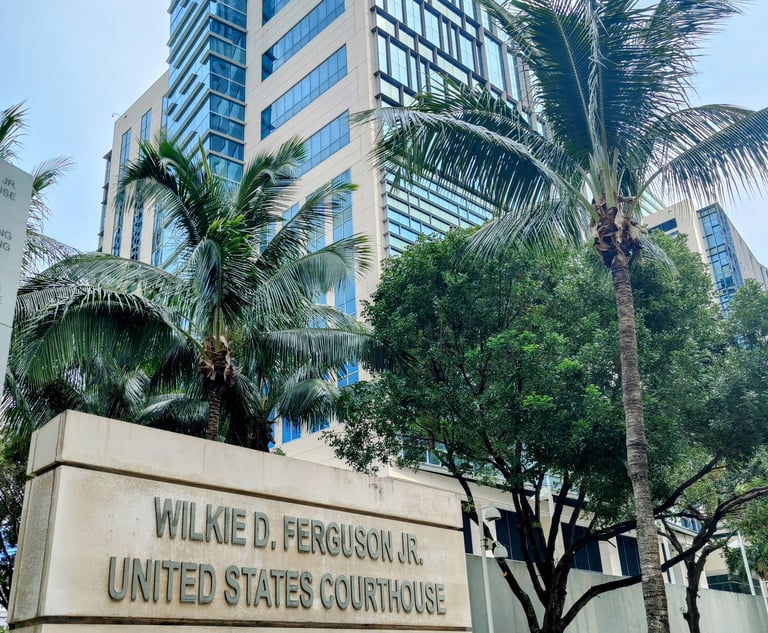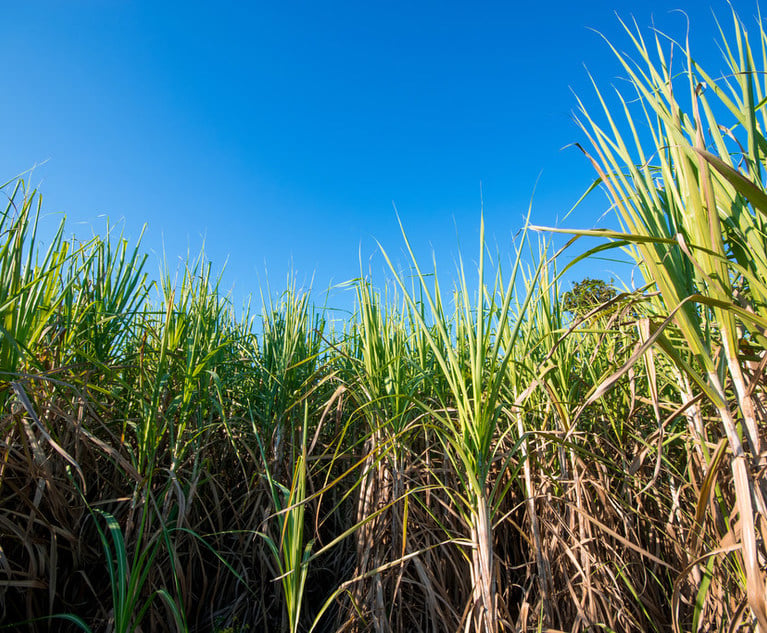North Florida Farmers Hit Again by Helene
Ranchers, farmers and timber growers are reporting widespread damage from the wind and rain of Hurricane Helene, which raced through rural North Florida last week.
October 01, 2024 at 12:21 PM
4 minute read
Agriculture Projected path of Hurricane Helene on Wednesday, September 25, 2024. Credit: NOAA
Projected path of Hurricane Helene on Wednesday, September 25, 2024. Credit: NOAA TALLAHASSEE—Ranchers, farmers and timber growers are reporting widespread damage from the wind and rain of Hurricane Helene, which raced through rural North Florida last week.
Chicken houses had roofs blown off. Acres of sweet corn and carrots were laid horizontal. Irrigation systems have been uprooted. Fences were destroyed by fallen trees. Hay has been left wet and moldy in damaged barns.
Incoming Senate President Ben Albritton, a Wauchula Republican and citrus grower, described conditions in fields across North Florida as "worse" than after Hurricane Idalia in August 2023. Idalia took a similar track, crossed many of the same fields and inflicted more than $400 million in damage to the industry.
But after meeting Monday with growers in Lake City, Albritton said the prevailing view remains "resilient" and "optimistic."
"I'm telling you, it is encouraging and fascinating, and I see a lot of the same out of North Florida after Idalia last year, after this storm and after Ian, which went across the heartland and up the center part of the state," Albritton said, referring to 2022's Hurricane Ian, which made landfall in Southwest Florida.
Gov. Ron DeSantis recently has urged lawmakers to hold a special legislative session to address problems affecting condominium owners.
But Albritton, who will become Senate president after the November elections, said he wants to take a more measured approach.
"Right now, I'm really not contemplating a special session," Albritton said. "We've got a lot of big issues that are floating around, and now we can add Hurricane Helene, and in not just the ag space but all over."
Agriculture Commissioner Wilton Simpson and Sen. Corey Simon, a Tallahassee Republican who represents a large swath of North Florida, joined Albritton at the meeting Monday.
Simpson described as "catastrophic" the destruction from the Category 4 Helene, which he said affected cattle, field crops, nurseries, beehives and agriculture processing plants. In addition to Idalia, Hurricane Debby also hit the region in August.
"There are no words to describe the devastation to these family farms who have been impacted by multiple storms. Many are still waiting on relief from previous disasters," Simpson wrote Sunday in a request to U.S. Agriculture Secretary Tom Vilsack for a federal disaster declaration.
"If immediate action is not taken, we are at risk of losing significant agriculture, aquaculture, and silviculture operations in this region due to circumstances beyond our farmers' control," Simpson added.
Simpson wrote that in addition to crop and animal losses, fences, barns, honey bee boxes, irrigation systems and farm equipment have been destroyed or rendered useless.
"Riverine flooding is expected to continue well into October, potentially causing additional damage to the agriculture industries," Simpson said.
Helene had maximum sustained winds of 140 mph when it made landfall late Thursday in Taylor County.
On Friday, Simpson opened a loan program for growers and ranchers who sustained damage in the storm. The program offers interest-free loans up to $500,000 that can be used to repair or replace such things as fences, equipment and greenhouses.
In a November 2023 special legislative session after Idalia, lawmakers approved $75 million for a program that provides low-interest or interest-free loans to agriculture and aquaculture producers, along with $37.5 million to help timber owners.
Hurricane Ian, which barreled across the state in September 2022, inflicted agricultural losses of $1.03 billion, including $247.1 million for citrus growers, $204.6 million for vegetable and melon growers and $195.4 million for the nursery and greenhouse industry, according to the University of Florida Institute of Food and Agricultural Sciences, known as UF/IFAS.
Hurricane Idalia, which made landfall in Taylor County with maximum sustained winds of 115 mph, affected 3.5 million acres and caused production losses of $276 million. Beef cattle, dairy cattle, poultry and aquaculture accounted for $157.6 million of the estimated losses.
When damaged infrastructure and losses sustained by the timber industry were included, a state Department of Agriculture and Consumer Services estimate put Idalia damage at $447 million.
A preliminary report from UF/IFAS released Sept. 19 said agricultural damage from Hurricane Debby, which made landfall Aug. 5 in Taylor County as a Category 1 storm, was estimated between $93.7 million and $263.2 million.
Christa Court, UF/IFAS economic impact analysis program director, said Debby interrupted the planting schedule for vegetables, melons and potatoes.
"They're just now planting, or just now getting ready to plant, so had the storm happened one to three weeks later than it did, it would be a very different story," Court told reporters in a conference call when the report was released.
NOT FOR REPRINT
© 2025 ALM Global, LLC, All Rights Reserved. Request academic re-use from www.copyright.com. All other uses, submit a request to [email protected]. For more information visit Asset & Logo Licensing.
You Might Like
View All
'Close Our Borders?' Senate Judiciary Committee Examines Economics, Legal Predicate for Mass Deportation Proposal
3 minute read
'Stab Venequip in the Back': Caterpillar Faces $100M Lawsuit in Miami Federal Court
3 minute read
Another Roundup Trial Kicks Off in Missouri. Monsanto Faces 3 Plaintiffs
4 minute read
Trending Stories
- 1'A Death Sentence for TikTok'?: Litigators and Experts Weigh Impact of Potential Ban on Creators and Data Privacy
- 2Bribery Case Against Former Lt. Gov. Brian Benjamin Is Dropped
- 3‘Extremely Disturbing’: AI Firms Face Class Action by ‘Taskers’ Exposed to Traumatic Content
- 4State Appeals Court Revives BraunHagey Lawsuit Alleging $4.2M Unlawful Wire to China
- 5Invoking Trump, AG Bonta Reminds Lawyers of Duties to Noncitizens in Plea Dealing
Who Got The Work
J. Brugh Lower of Gibbons has entered an appearance for industrial equipment supplier Devco Corporation in a pending trademark infringement lawsuit. The suit, accusing the defendant of selling knock-off Graco products, was filed Dec. 18 in New Jersey District Court by Rivkin Radler on behalf of Graco Inc. and Graco Minnesota. The case, assigned to U.S. District Judge Zahid N. Quraishi, is 3:24-cv-11294, Graco Inc. et al v. Devco Corporation.
Who Got The Work
Rebecca Maller-Stein and Kent A. Yalowitz of Arnold & Porter Kaye Scholer have entered their appearances for Hanaco Venture Capital and its executives, Lior Prosor and David Frankel, in a pending securities lawsuit. The action, filed on Dec. 24 in New York Southern District Court by Zell, Aron & Co. on behalf of Goldeneye Advisors, accuses the defendants of negligently and fraudulently managing the plaintiff's $1 million investment. The case, assigned to U.S. District Judge Vernon S. Broderick, is 1:24-cv-09918, Goldeneye Advisors, LLC v. Hanaco Venture Capital, Ltd. et al.
Who Got The Work
Attorneys from A&O Shearman has stepped in as defense counsel for Toronto-Dominion Bank and other defendants in a pending securities class action. The suit, filed Dec. 11 in New York Southern District Court by Bleichmar Fonti & Auld, accuses the defendants of concealing the bank's 'pervasive' deficiencies in regards to its compliance with the Bank Secrecy Act and the quality of its anti-money laundering controls. The case, assigned to U.S. District Judge Arun Subramanian, is 1:24-cv-09445, Gonzalez v. The Toronto-Dominion Bank et al.
Who Got The Work
Crown Castle International, a Pennsylvania company providing shared communications infrastructure, has turned to Luke D. Wolf of Gordon Rees Scully Mansukhani to fend off a pending breach-of-contract lawsuit. The court action, filed Nov. 25 in Michigan Eastern District Court by Hooper Hathaway PC on behalf of The Town Residences LLC, accuses Crown Castle of failing to transfer approximately $30,000 in utility payments from T-Mobile in breach of a roof-top lease and assignment agreement. The case, assigned to U.S. District Judge Susan K. Declercq, is 2:24-cv-13131, The Town Residences LLC v. T-Mobile US, Inc. et al.
Who Got The Work
Wilfred P. Coronato and Daniel M. Schwartz of McCarter & English have stepped in as defense counsel to Electrolux Home Products Inc. in a pending product liability lawsuit. The court action, filed Nov. 26 in New York Eastern District Court by Poulos Lopiccolo PC and Nagel Rice LLP on behalf of David Stern, alleges that the defendant's refrigerators’ drawers and shelving repeatedly break and fall apart within months after purchase. The case, assigned to U.S. District Judge Joan M. Azrack, is 2:24-cv-08204, Stern v. Electrolux Home Products, Inc.
Featured Firms
Law Offices of Gary Martin Hays & Associates, P.C.
(470) 294-1674
Law Offices of Mark E. Salomone
(857) 444-6468
Smith & Hassler
(713) 739-1250






